Pulse Wave Monitoring for Arterial Stiffness Detection Using a Simple Portable Tonometer †
Abstract
:1. Introduction
2. Materials and Methods
3. Results
4. Conclusions
Acknowledgments
Conflicts of Interest
References
- Van Bortel, L.M.; Laurent, S.; Boutouyrie, P.; Chowienczyk, P. Cruickshank, J.K.; Backer, T.D.; Filipovsky, J.; Huybrechts, S.; Mattace-Raso, F.U.S.; Protogerou, A.D.; et al. Expert consensus document on the measurement of aortic stiffness in daily practice using carotid-femoral pulse wave velocity. J. Hypertens. 2012, 30, 445–448. [Google Scholar] [CrossRef] [PubMed]
- Yousefi Rizi, F.; Setarehdan, S.K.; Behnam, H.; Alizadeh Sani, Z. Study of the effects of age and body mass index on the carotid wall vibration: Extraction methodology and analysis. Proc. Inst. Mech. Eng. H 2014, 228, 714–729. [Google Scholar] [CrossRef] [PubMed]
- Kingsley, J.D.; Mayo, X.; Tai, Y.L.; Fennell, C. Arterial stiffness and autonomic modulation following free-weight resistance exercises in resistance trained individuals. J. Strength Cond. Res. 2016, 30, 3373–3380. [Google Scholar] [CrossRef] [PubMed]
- Bongrain, A.; Rousseau, L.; Valbin, L.; Madaoui, N.; Lissorgues, G.; Verjus, F.; Chapon, P.A. A New Technology of Ultrathin AlN Piezoelectric Sensor for Pulse Wave Measurement. Procedia Eng. 2015, 120, 459–463. [Google Scholar] [CrossRef]
- Nenova, B.; Llive, I. An automated algorithm for fast pulse wave detection. Int. J. Bioautom. 2010, 14, 203–216. [Google Scholar]

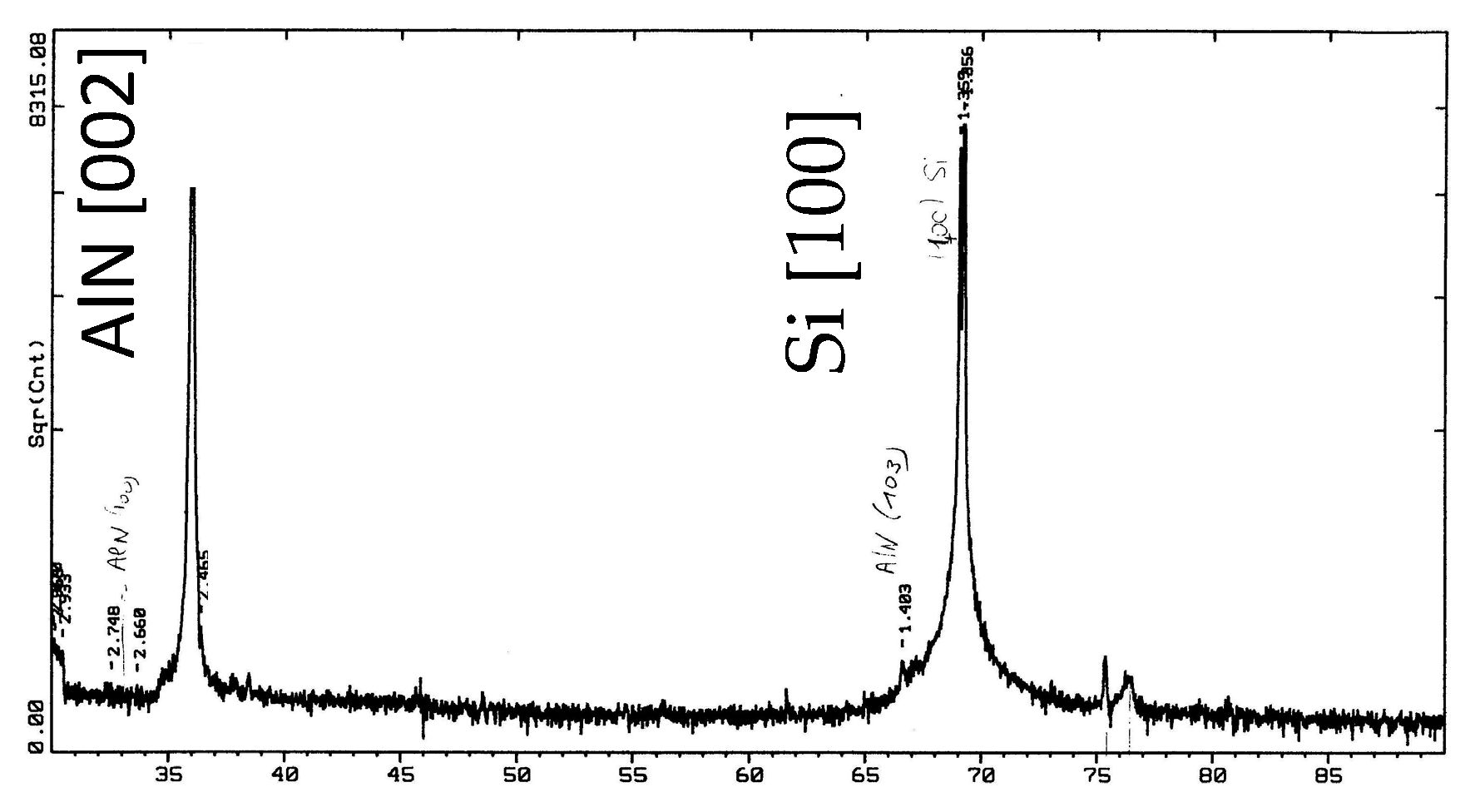

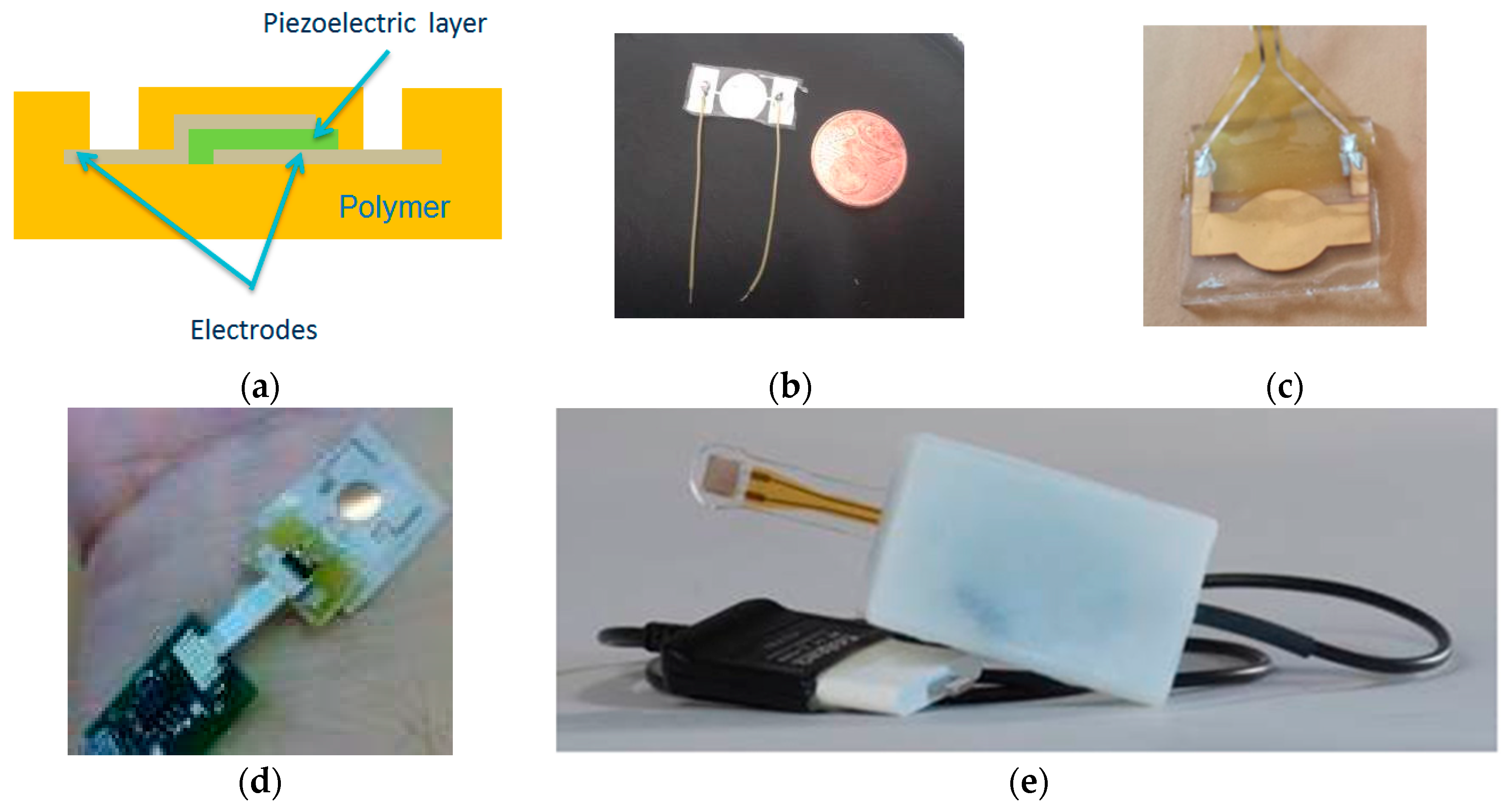
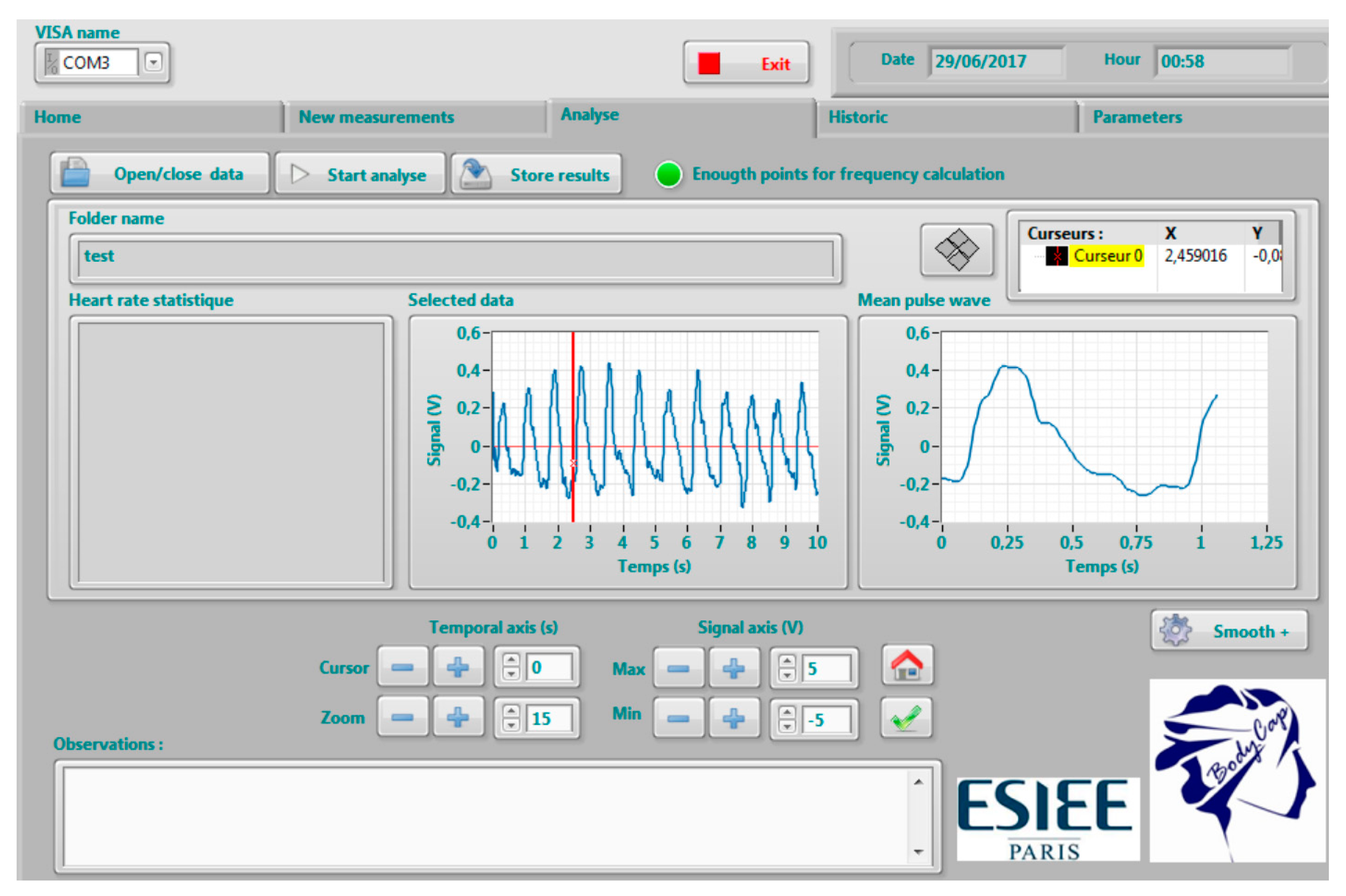
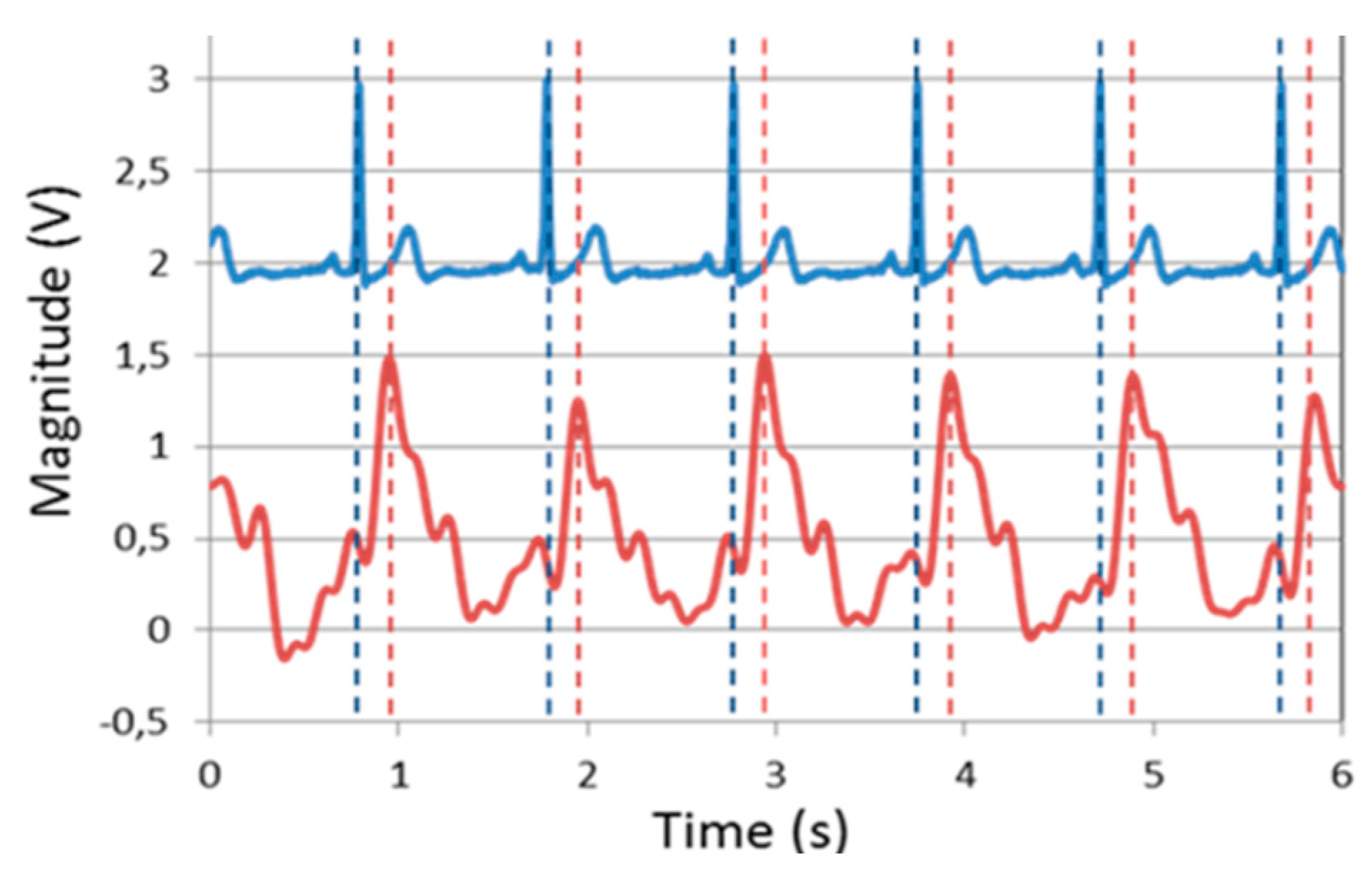
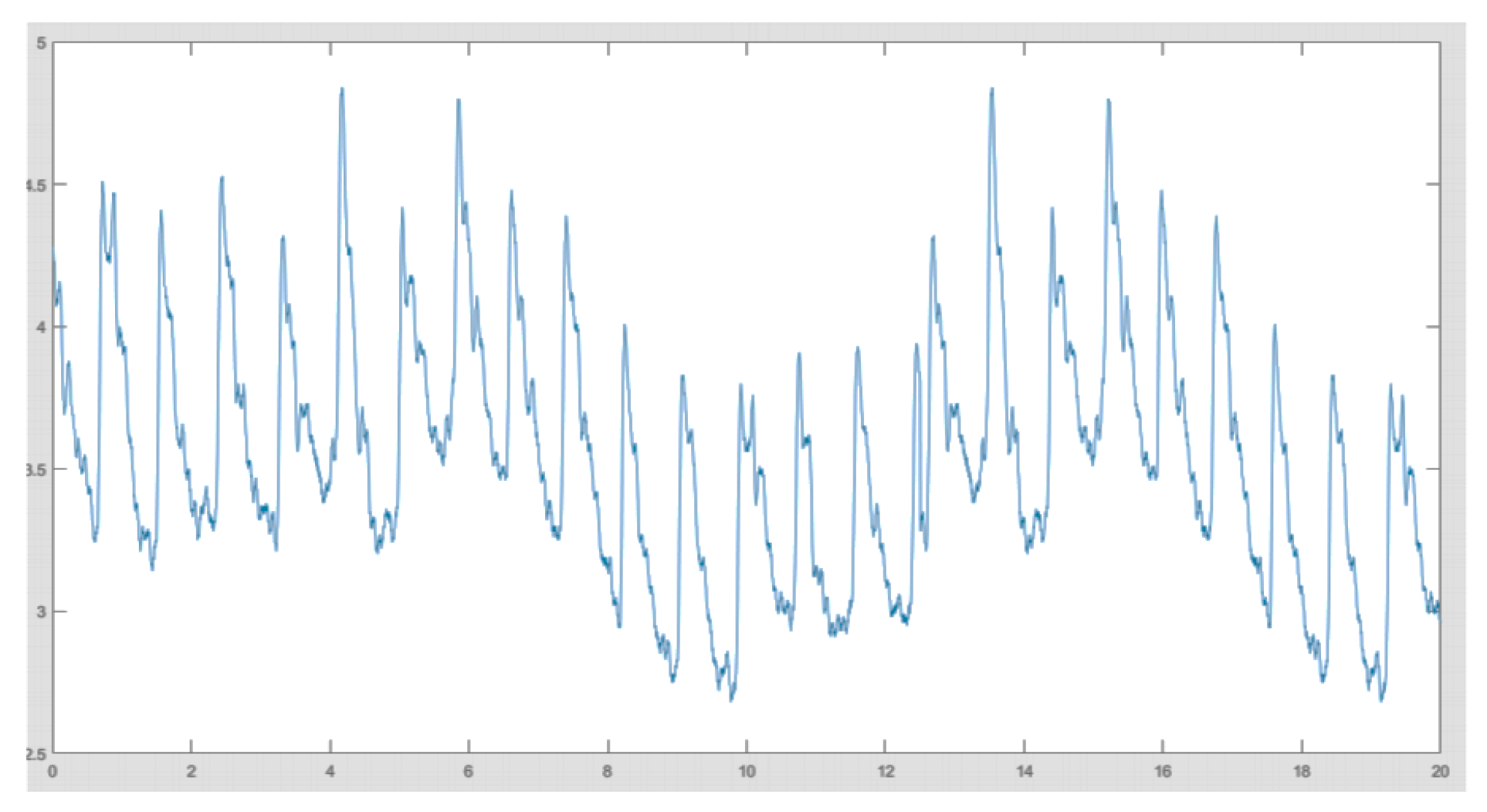

Publisher’s Note: MDPI stays neutral with regard to jurisdictional claims in published maps and institutional affiliations. |
© 2017 by the authors. Licensee MDPI, Basel, Switzerland. This article is an open access article distributed under the terms and conditions of the Creative Commons Attribution (CC BY) license (https://creativecommons.org/licenses/by/4.0/).
Share and Cite
Lissorgues, G.; Bongrain, A.; Rousseau, L.; Madaoui, N.; Testi, A.; Valbin, L.; Moussay, S.; Chapon, P.-A. Pulse Wave Monitoring for Arterial Stiffness Detection Using a Simple Portable Tonometer. Proceedings 2017, 1, 370. https://doi.org/10.3390/proceedings1040370
Lissorgues G, Bongrain A, Rousseau L, Madaoui N, Testi A, Valbin L, Moussay S, Chapon P-A. Pulse Wave Monitoring for Arterial Stiffness Detection Using a Simple Portable Tonometer. Proceedings. 2017; 1(4):370. https://doi.org/10.3390/proceedings1040370
Chicago/Turabian StyleLissorgues, Gaëlle, Alexandre Bongrain, Lionel Rousseau, Nadia Madaoui, Amandine Testi, Laurie Valbin, Sébastien Moussay, and Pierre-Alexandre Chapon. 2017. "Pulse Wave Monitoring for Arterial Stiffness Detection Using a Simple Portable Tonometer" Proceedings 1, no. 4: 370. https://doi.org/10.3390/proceedings1040370




